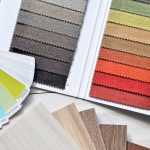You might not realize it, but every time you wash synthetic clothing, you’re contributing to a hidden environmental crisis. Those cozy polyester and nylon garments release thousands of microfibers, polluting our waterways and harming marine life. The consequences ripple through ecosystems, affecting biodiversity in ways you might not expect. So, what can you do to tackle this issue and make a difference? Let’s explore the alarming facts and effective solutions.
Table of Contents
Key Takeaways
- Washing synthetic clothing, like polyester and nylon, releases thousands of microfibers into water, contributing significantly to microplastic pollution.
- Microplastics from washed garments can be ingested by marine life, leading to harmful bioaccumulation and ecosystem disruption.
- The environmental impact of microplastics extends to declines in biodiversity and the absorption of toxic pollutants within the food web.
- Solutions include using Guppyfriend Bags, installing washing machine filters, and opting for natural fabric clothing to reduce microfiber emissions.
- Advocating for sustainable fashion practices and supporting ethical brands can help mitigate the hidden impacts of synthetic clothing on the environment.
Understanding Microplastics in Synthetic Clothing
As you explore the world of synthetic clothing, it’s essential to understand the impact of microplastics.
These tiny plastic particles, often less than 5 millimeters in size, shed from garments made of materials like polyester and nylon during washing. Each load can release thousands of microfibers into the water, which can eventually end up in oceans and rivers.
Tiny plastic particles from synthetic fabrics shed during washing, releasing thousands of microfibers that pollute our oceans and rivers.
This pollution poses significant threats to marine life, as these particles are ingested by fish and other organisms.
It’s vital to recognize that while synthetic fabrics offer durability and comfort, they come with environmental costs.
Major Sources of Microplastic Pollution
While synthetic clothing is a significant contributor to microplastic pollution, it’s not the only source. Tires are another major culprit; as you drive, tiny rubber particles wear off and end up in our waterways.
Additionally, personal care products like exfoliating scrubs and face washes often contain microbeads, which wash down the drain and enter the environment.
Dust from synthetic carpets and furnishings also contributes, as those fibers break down over time.
Even the breakdown of larger plastic items in landfills creates microplastics that can leach into the soil and water.
Environmental Consequences of Microplastics
Microplastics pose serious environmental consequences that extend beyond their immediate presence in ecosystems. When these tiny particles enter water bodies, they can be ingested by marine life, leading to bioaccumulation in food chains.
You mightn’t realize it, but these microplastics can harm aquatic organisms, affecting their growth, reproduction, and survival rates. Additionally, they can disrupt the delicate balance of ecosystems, contributing to declines in biodiversity.
Microplastics threaten aquatic life, hindering growth and reproduction, while disrupting ecosystems and diminishing biodiversity.
As these particles break down further, they absorb toxic pollutants, which then enter the food web, ultimately impacting human health. The presence of microplastics in the environment also complicates waste management efforts, as they can be challenging to filter out from natural habitats.
Addressing these issues is vital for maintaining ecological integrity.
Effective Solutions to Reduce Microplastic Emissions
To effectively tackle the issue of microplastic emissions, individuals and industries must adopt practical strategies that minimize their release into the environment. Here are some effective solutions:
| Solution | Description | Benefits |
|---|---|---|
| Use Guppyfriend Bags | Wash synthetic clothes in special bags that capture microfibers. | Reduces microfiber release. |
| Install Filters | Equip washing machines with microfiber filters to trap particles. | Prevents pollution in waterways. |
| Choose Natural Fibers | Opt for clothing made from natural materials like cotton or wool. | Reduces overall microplastic production. |
Future Directions for Sustainable Fashion Practices
As awareness grows around the environmental impact of synthetic fibers, the fashion industry is increasingly exploring sustainable practices that prioritize eco-friendliness.
You can support this movement by choosing brands that utilize organic materials, recycled fabrics, or innovative fibers like Tencel. Consider the lifecycle of your clothing—invest in quality pieces designed to last, rather than fast fashion that contributes to waste.
Additionally, advocate for transparency in supply chains and support companies committed to ethical manufacturing. You might also explore clothing rental services or upcycling initiatives to extend the life of garments.
Frequently Asked Questions
How Do Microplastics Affect Marine Life Specifically?
Imagine a silent storm brewing beneath the waves. Microplastics infiltrate marine ecosystems, choking coral, poisoning fish, and disrupting entire food webs. You’d witness vibrant life dimming, as these tiny invaders wreak havoc in the ocean’s depths.
Can Microplastics Enter the Human Body Through Food?
Yes, microplastics can enter your body through food, especially seafood. When you consume contaminated food, tiny plastic particles might be ingested, potentially affecting your health and raising concerns about long-term exposure to these substances.
What Are the Long-Term Health Effects of Microplastic Exposure?
Research shows that 90% of humans have microplastics in their bodies. Long-term exposure may lead to inflammation, hormonal disruptions, and increased cancer risk, so it’s essential to stay informed about microplastics in your environment.
Are All Synthetic Materials Equally Harmful Regarding Microplastics?
Not all synthetic materials are equally harmful regarding microplastics. Some fabrics shed more fibers than others during washing, so you should choose your clothing wisely to minimize your exposure to microplastics in the environment.
How Can Consumers Identify Sustainable Fashion Brands?
Finding sustainable fashion brands isn’t as tough as it seems. Look for certifications, eco-friendly materials, and transparent practices. You’ll spot brands committed to sustainability, making it easier to shop responsibly and support our planet.
- Recycling Nonwoven Fabrics: Is It Possible? - July 11, 2025
- Recycling Nonwoven Fabrics: Is It Possible? - July 11, 2025
- Recycling Nonwoven Fabrics: Is It Possible? - July 11, 2025






